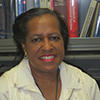Taking Measure
Just a Standard Blog
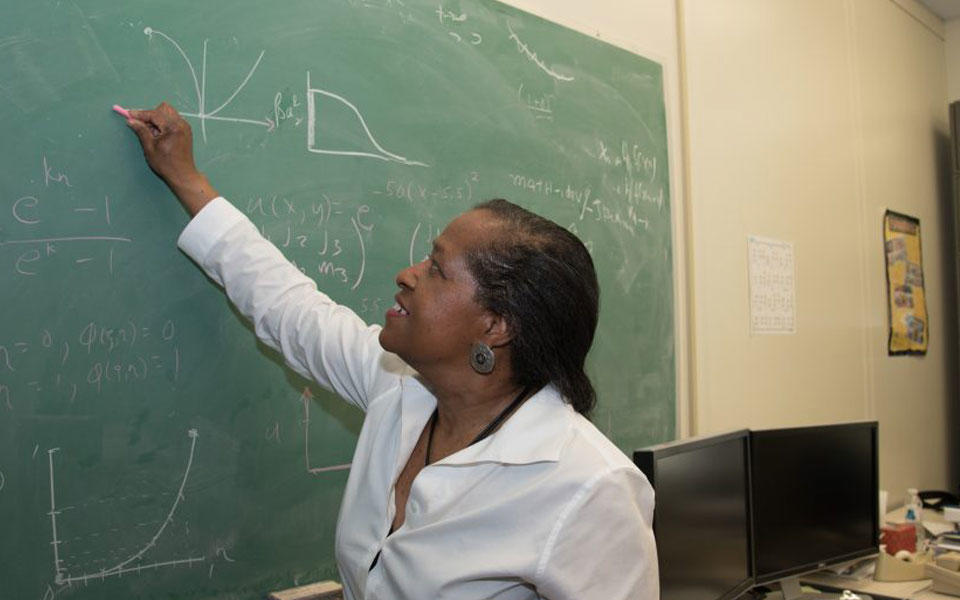
There’s no substitute for doing mathematics by hand.
Before “Hidden Figures” was a movie, it was a book. Actually, two books—the regular book and a young readers’ edition. I liked the movie, but I loved the books. For many months, I watched the excitement surrounding the movie about three African-American women who made significant contributions to NASA’s space program with a great deal of interest and a wide range of emotions, from pride and amusement to bewilderment and sadness.
Parallels and Intersections
At the Joint Mathematics Meetings in Atlanta, Georgia, this past January, I attended a panel featuring the book’s author, Margot Lee Shetterly, the fourth mathematician/engineer Dr. Christine Darden, who was mentioned in the book but not the movie, and Morehouse professor Rudy Horne, the mathematics consultant for the movie. During the question and answer period, I stood up and complimented the author on her writing and the depth of her research. I said I thought the book should be in every high school in the U.S., not so much because of the story about the four women, but because of the history that enveloped the women. It’s rare to see so many topics from African-American history—school segregation, Jim Crow laws, the Brown vs. Board of Education Supreme Court decision, Virginia’s Massive Resistance response, sit-ins, voting rights, to name a few—in one place and at the same time, so that you really get a glimpse into how that history affected people’s lives.
Of course, I might be too close to the subject to be completely objective. I grew up in Portsmouth, Virginia, which is part of the Hampton Roads region where the story is set, and I did my doctoral research in computational and applied mathematics at NASA’s Langley Research Center. As I read the book, I was amazed at the number of parallels and intersections I found with my own life.
I attended segregated schools until I entered high school. It was a few years after the Brown decision, so schools were no longer segregated by law, just in reality. Like several school systems during that time, Portsmouth had implemented a policy called “Freedom of Choice,” which meant you could attend any school in the public system. In practice, it meant that a few black students attended white schools, but no white students attended black schools.
Eventually, the courts decided that more needed to be done to achieve integrated school systems. Thus began the era of forced busing. High school students in my neighborhood were bused to a predominantly white school across town, but all my close friends from junior high school were sent to other schools. I still remember the apprehension I felt standing on the front lawn of my new school on that first day. A lot of thoughts went through my mind. I had excelled in segregated schools, but how would I do here? At least that source of apprehension was eliminated once I saw my first report card: 5 A’s and a B—in chorus.
I went on to graduate as valedictorian four years later, but my singing career never took off.
Although I attended the same high school all four years, several of my junior high friends were not so fortunate. They were bused to two, and sometimes three, different schools as protests and arguments raged about what to do with the black high school. Most of them excelled academically despite what they went through, but there was one brilliant student a grade above me who suffered a mental breakdown a few years later. I have often wondered whether her mental illness was related to, or accelerated by, the turmoil of that time.
Like the mathematicians featured in the movie, I originally planned to be a high school math teacher, but changed my mind after getting my bachelor’s in mathematics from the College of William and Mary. Deciding I needed more of a challenge, I went on to the University of Virginia to get a master’s in pure, or theoretical, mathematics. After graduating, I started teaching at Norfolk State University, and later Hampton University.
By then, though, I was beginning to feel myself being pulled in a slightly different direction.
A New Vector
I had taken some computer programming classes and wanted to do something that was a mixture of computer science and real-world, or applied, mathematics. When I heard about a new master’s graduate program in computational and applied mathematics at Old Dominion University (ODU), I jumped at it. I initially planned to get a second master’s degree before going on to a school with a more established PhD program, so I only entered as a part-time student. However, when ODU established a doctoral program in applied math a short time later, the graduate program director, Philip Wohl, sent me a letter congratulating me on my acceptance into the doctoral program. When I asked him how I could be accepted into a program I hadn’t even applied to, he looked at me with a sneaky smile and said, “Oh, we put all our promising students into the PhD program!”
I silently wondered if they had any students besides me in the program yet, but I decided to stay.
One of my professors, Philip Smith, even took it upon himself to become my dissertation advisor without me having to ask. It turned out to be an ideal match. He helped me get an internship with Robert Smith, an aerospace engineer at NASA Langley Research Center in Hampton, Virginia. That eventually led to a NASA Graduate Student Researchers’ Fellowship that paid more than my teaching position at Hampton!
Lift Off
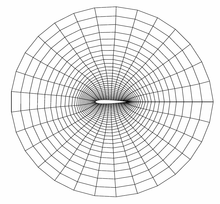
At NASA, I researched grid, or mesh, generation. When an engineer designs an airplane wing, for instance, he has to solve equations that model the air flow over the wing to determine the best wing shape. This research is sometimes conducted using a wind tunnel, as seen in the scene with Mary Jackson and the Mercury capsule in the movie, but by the time I arrived, some 23 years after the events in the movie took place, wind tunnel testing was often supported by numerical simulations in which the equations of motion are solved on a computer. The equations are solved at every point of a grid designed to conform to the wing shape. Those grid points must be chosen carefully so that the engineer receives an accurate picture of how fast and smoothly air flows past the wing. I developed computer codes to pick the optimal locations for the mesh points.
Grids such as this are used in any area of research where equations must be solved over an oddly shaped domain. For example, in addition to aerodynamics (airplane, automobile design), they are used in hydrodynamics (ship design), electromagnetics, and materials science.
I would have been very happy to stay at NASA after I got my PhD, but budget issues limited the number of new positions.
On the Grid
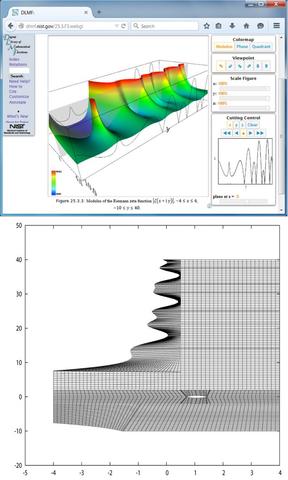
After four years working for a defense contractor in the Washington, DC, area, I got a job at NIST. I started out writing code for computing special mathematical functions, but also continued my research in grid generation, this time in the field of materials science. I worked on numerical codes and grids to study the Bridgman growth of metal alloys, a popular method used to produce semiconductor crystals.
I was eventually asked to work on the NIST Digital Library of Mathematical Functions (DLMF) Project, a massive undertaking to revise and expand the venerable NBS Handbook of Mathematical Functions, first published in 1964, with the goal of disseminating it not only as a book, but also as an online resource.
I lead the development of graphs and visualizations for the DLMF. This turned out to be quite a challenging endeavor involving a small but devoted team of computer scientists, mathematicians, and college students. We eventually created close to 600 figures of mathematical functions important to mathematicians, physicists, engineers and other scientists. About 200 of the figures were also rendered as interactive 3-D visualizations of function surfaces. Here again, my skills in the field of grid generation proved useful for the development of computational grids that captured key features of the functions. This work led to numerous technical publications and talks, including more than 15 presentations at international conferences in nine countries.
Hidden Figures
At the beginning of this post I mentioned the range of emotions I felt as I observed all the excitement about the movie. My pride in the accomplishments of the women it featured is easy to understand. My amusement and bewilderment came from the scope of the public reaction. There were media reports of civic groups, fraternities, sororities, schools, churches and even private businesses throughout the country buying out theaters and holding panel discussions, and in fact, I participated on several panels held in the Washington, DC, metropolitan area.
However, the sadness I felt is a little harder to explain. It comes from two places.
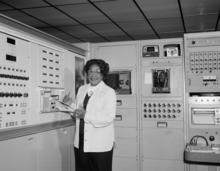
One source relates to my time at NASA. You see, I met Mary Jackson there near the end of her career, a year or two from retirement. When she introduced herself, she said, “My name is Mary Jackson, and I am an engineer.” I was puzzled because she was an Equal Employment Opportunity (EEO) manager at the time. I wondered whether she meant she was an engineer because of her field of study or if she had been a NASA engineer at one time. I didn’t pry, but I detected a sense of regret. More than 30 years later, I found the answer when I read “Hidden Figures.” Mary Jackson was not just an engineer: She was NASA’s first black female engineer! However, realizing that women were unlikely to reach the management level as engineers, she took a grade demotion to accept the position of Federal Women’s Program Manager, and later Affirmative Action Manager, in the NASA Langley EEO office. There, she worked to promote the hiring and advancement of women and minorities. Still, it made me wonder how much talent has been wasted or stifled because of race and gender discrimination.
The other source of my sadness is much closer to home. It’s one thing to read about discrimination and abuse that occurred in another state and at another time, but it’s very different when it’s near your hometown and not so long ago. As I watched the movie, it hit me for the first time that this was my parents’ world. They experienced sitting in the back of the bus, colored-only water fountains, segregated libraries, and separate lunch counters at Woolworth’s. When I came along, these injustices were gone or almost gone. I’m sure their lives and dreams had been deeply affected by segregation laws, but by not dwelling on the past they had protected me, freeing me to grow into a woman who could aspire to go anywhere and be anything she chose.
About the author
Related Posts
Comments
- Reply
Bonita, you should be the Hidden Figure of Commerce instead of me. I got a little bit discrimination during my carrier path, as Asia and female, but not those faced by you. You did not mentioned that you are a great tennis player and always my favorite tennis captain.
Liz, Thanks so much for your kind remarks. You're a remarkable person and deserve all the honors you've received. I have fond memories of playing tennis with you.


